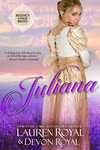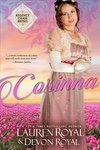Juliana (49 page)

In 1740, artist William Hogarth, an early Governor of the Hospital, donated the first painting to the Hospital and encouraged other artists to follow his example—and thus England's first public art gallery was born. When the wealthy came to see the art or attend concerts given by another Governor, George Frideric Handel, they were encouraged to make charitable donations. Although there's no written record of anyone donating anything besides money, we like to think that the Governors would have been open to an idea like Juliana's.
By 1954, the year the Hospital closed, it had served more than 27,000 children. Today you can visit the Foundling Museum in London, which is on the site of the original Hospital and contains artifacts as well as the art collection, displayed in fully restored interiors.
Most of the homes in our books are inspired by real places you can see. Stafford House, James's home in St. James's Place, is based on Spencer House, one of the great architectural landmarks of London. Built in the eighteenth century by John, 1st Earl Spencer (an ancestor of Diana, Princess of Wales), it was immediately recognized as a building of major importance. Should you ever find yourself in London, we highly recommend a visit. Its exquisite rooms have all been restored, and you will see many of the antiquities Amanda admired in this book. Spencer House is open to the public every Sunday except during January and August.
The Chases' town house at 44 Berkeley Square has been described as "the finest terrace house of London." It was designed in 1742 by William Kent for Lady Isabella Finch. Unfortunately, you cannot visit, because the building is currently being used as a private club. But if you go to Berkeley Square, you can see it from the outside—look for the blue door.
Cainewood Castle, Griffin's home where Juliana and James married, is loosely modeled on Arundel Castle in West Sussex. It has been home to the Dukes of Norfolk and their family, the Fitzalan-Howards, since 1243, save for a short period during the Civil War. Although the family still resides there, portions of their magnificent home are open to visitors Sundays through Fridays from April to October.
To see pictures and learn more about the
real places
featured in
Juliana
, please visit our website at
www.LaurenandDevonRoyal.com
, where you can also
enter a contes
t
and find modern versions of all the
recipes
in this book.
If you missed Alexandra's story, you can find it in
Alexandra
, the first book in our Regency Chase Brides series
.
And for a chance to revisit Juliana and James, look for the third book in this series,
Corinna
, which is not only Corinna's story, but Griffin and Rachael's, too! You'll find an
excerpt
in the back of this book.
To hear about our
upcoming releases
and other news, please sign up for our
newsletter
, join our Chase Family Readers Group on
Facebook
,
or follow us on
Instagram
. We love to keep up with our readers!
I hope you enjoyed
Juliana
—thank you for reading!
Till next time,

For more information, click on a cover.
Renaissance Chase Family Series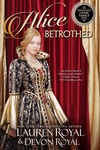

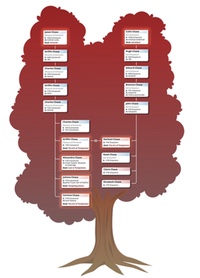
Click here
to see the tree much larger!
a sterling silver replica of the pendant James gave Juliana in this book!*

To enter, visit the
contest page
on Lauren and Devon’s website at
LaurenandDevonRoyal.com
and answer a question to be entered in the monthly drawing.
No purchase necessary. See complete rules on the site.
*Please note: Depending on when you enter, the prize may be another piece of jewelry associated with one of the Royals’ books.
CORINNA
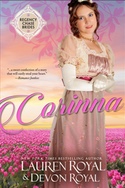 Book Three of the
Book Three of theRegency Chase Brides series

